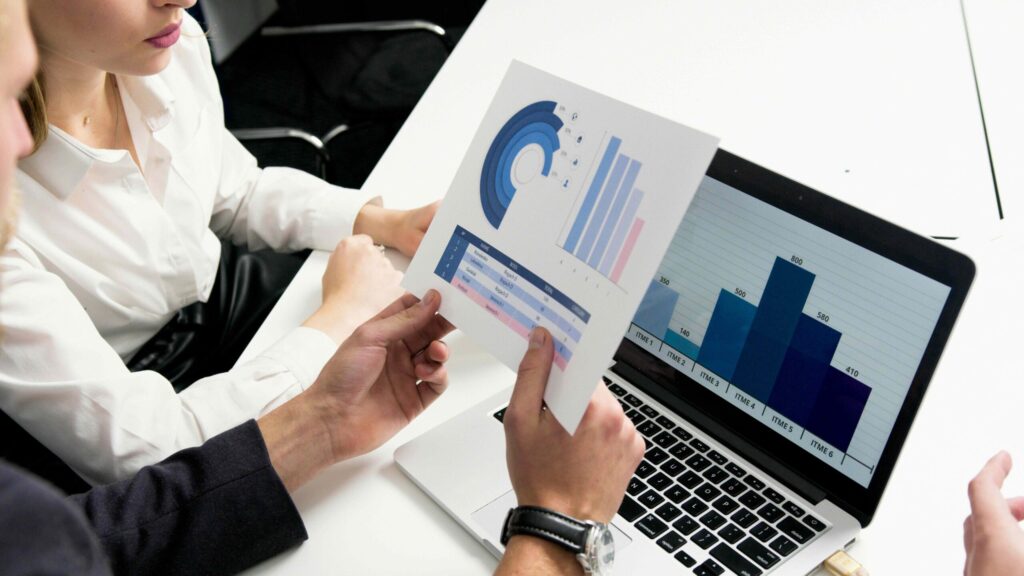In today’s data-driven world, the ability to extract actionable insights from vast data sets is critical for business success. Tableau plays a pivotal role in this landscape by enabling organizations to harness the power of their data through advanced analytics and visual storytelling. With its sophisticated features, Tableau helps businesses move beyond traditional reporting methods and fosters a culture of data-driven decision-making.
As a leading tool in the data visualization landscape, Tableau has established itself as a preferred choice for businesses aiming to leverage their data for strategic advantage. Its ability to transform raw data into interactive and shareable dashboards empowers organizations to not only understand their data better but also communicate findings more effectively across all levels of the organization.
If you want to enhance your analytical capabilities and unlock the full potential of your organization’s data, learning Tableau can help you drive success in an increasingly competitive environment. In this guide, we’ll cover Tableau’s key features, capabilities, and applications, as well as pathways to learning how to leverage the platform to achieve business goals.
Key Features of Tableau for Business Analytics
Tableau is renowned for its robust capabilities that empower organizations to unlock the value of their data. Key features that make it a powerful tool for business analytics include data connection and integration capabilities, an intuitive interface, interactive dashboards, and advanced analytics functions.
By learning how to leverage these capabilities, you can transform raw data into actionable insights, driving informed decision-making and strategic growth for your organization. Below, we’ll go into each feature in more detail.
Data Connection and Integration Capabilities
One of Tableau’s standout features is its ability to connect to a wide variety of data sources, both on-premises and in the cloud. Users can integrate data from relational databases, spreadsheets, big data systems, and even web-based data sources. This flexibility enables organizations to consolidate disparate data into a single platform, allowing for comprehensive analysis and reporting. Tableau’s live data connections facilitate real-time updates, ensuring that users are always working with the most current information. This capability is critical for businesses that need to make timely decisions based on dynamic data.
Intuitive Drag-and-Drop Interface for Creating Visualizations
Tableau’s user-friendly drag-and-drop interface allows users to create stunning visualizations effortlessly, regardless of their technical expertise. By simply dragging data fields into the workspace, users can generate a wide array of charts, graphs, and maps in seconds. This intuitive approach eliminates the need for complex coding or extensive training, making data analysis accessible to everyone within an organization. Users can focus on the insights derived from the data rather than spending excessive time on the technical aspects of visualization.
Interactive Dashboards for Real-Time Data Exploration
Tableau’s interactive dashboards are a game-changer for data exploration. Users can create dashboards that combine multiple visualizations, providing a holistic view of key performance indicators (KPIs) and metrics. These dashboards are not static; they allow users to interact with the data through filtering, drilling down into specific data points, and even viewing details in real time.
Creating an interactive dashboard not only enhances data exploration but also allows stakeholders to engage directly with the data. Applying best practices in dashboard design ensures that your visualizations effectively communicate insights and engage your audience. This interactivity enhances the ability to explore data dynamically, enabling users to uncover insights and trends that may not be immediately apparent in traditional reports.
In addition to creating interactive dashboards, leveraging Tableau Server allows teams to share these visualizations securely and collaborate effectively across the organization.
Advanced Analytics Features for In-Depth Analysis
Trend Analysis
Visual analytics capabilities in Tableau allow users to explore data patterns and trends in a more intuitive way. The platform’s advanced analytics capabilities enable users to conduct trend analysis effectively. By visualizing historical data, users can identify patterns and trends over time, providing critical insights into performance metrics. This ability helps organizations make informed decisions by understanding how factors such as seasonality and market changes impact business outcomes.
Forecasting Capabilities
Forecasting is a vital component of business analytics, and Tableau provides powerful forecasting tools that leverage historical data to predict future outcomes. By employing statistical models, users can generate forecasts that inform strategic planning, inventory management, and sales projections. This foresight allows businesses to proactively address potential challenges and capitalize on opportunities.
Statistical Functions
Tableau offers a range of built-in statistical functions that allow users to perform complex analyses without needing extensive statistical knowledge. Users can apply measures such as averages, standard deviations, and correlations to their data, providing deeper insights into relationships and performance metrics. These statistical tools enhance the analytical capabilities of Tableau, enabling businesses to derive meaningful conclusions from their data.
Tableau’s AI Tools and Capabilities
Tableau integrates advanced artificial intelligence (AI) tools and capabilities that significantly enhance the way users analyze and visualize data by providing automatic insights, predictive modeling, and user-friendly interactions. These functionalities not only streamline the analytical process but also provide deeper insights, making data-driven decision-making more accessible and efficient.
Overview of AI Functionalities in Tableau
Explain Data for Automatic Insights on Trends and Anomalies
One of the most innovative AI features in Tableau is Explain Data, which automatically analyzes visualizations to uncover the factors driving trends and anomalies within the data. When users hover over specific data points, Tableau utilizes machine learning algorithms to provide contextual explanations about what might be influencing those values.
This functionality allows users to quickly identify significant changes or unexpected outcomes, enabling them to investigate further without needing extensive data analysis expertise. By automating this insight generation, Tableau empowers users to focus on strategic decision-making rather than getting lost in data interpretation.
Predictive Modeling Features for Data Forecasting
Tableau also offers robust predictive modeling capabilities that allow users to forecast future trends based on historical data. Using statistical techniques, such as regression analysis and time-series forecasting, Tableau can generate projections that help businesses anticipate market changes, sales patterns, and operational performance. These predictive insights are invaluable for strategic planning, as they enable organizations to make proactive decisions based on anticipated trends, rather than reacting to events as they unfold.
Enhancing Data Analysis and Visualization Through AI
AI-Driven Recommendations for Effective Storytelling
Tableau also leverages AI to enhance the storytelling aspect of data visualization. Through its automated recommendations, Tableau suggests the most effective visualization types and design layouts based on the data being analyzed. This guidance helps users craft compelling narratives that resonate with their audiences, ensuring that insights are communicated clearly and effectively. By simplifying the visualization process, Tableau enables users to create impactful dashboards that drive engagement and understanding among stakeholders.
Natural Language Processing for Querying Data Easily
Another significant AI capability in Tableau is its natural language processing (NLP) feature, which allows users to interact with their data using conversational language. Users can ask questions about their data in plain English, and Tableau will generate visualizations or insights based on those queries.
This functionality breaks down barriers for non-technical users, enabling everyone within an organization to explore data and derive insights without needing to learn complex query languages or visualization techniques. By making data exploration more intuitive, Tableau democratizes access to analytics, empowering all users to engage with and benefit from data insights.
Practical Applications of Tableau in Business Analytics
Tableau has become an invaluable asset for businesses seeking to leverage data for strategic insights. Its versatility allows organizations across various industries to apply data visualization to address specific challenges and enhance decision-making processes. Below are some practical applications of Tableau in business analytics.
Real-World Examples of How Businesses Use Tableau
Sales and Marketing Analysis
Companies use Tableau to gain insights into their sales and marketing performance, enabling them to refine their strategies. The platform’s data-driven approach allows organizations to make informed decisions on resource allocation and campaign adjustments, ultimately driving higher sales and better ROI.
For instance, businesses can visualize sales data by region, product line, or sales representative, helping them identify high-performing areas and opportunities for improvement. Marketers leverage Tableau to analyze campaign effectiveness, track key performance indicators (KPIs), and optimize marketing spend by visualizing customer response rates and conversion metrics.
Customer Segmentation and Behavioral Insights
Understanding customer behavior is crucial for tailoring products and services to meet market demands. Businesses utilize Tableau to segment their customer base based on demographics, purchasing behavior, and preferences. By visualizing these segments, organizations can identify trends and patterns, allowing for targeted marketing efforts and personalized customer experiences. For example, a retail company might analyze purchasing trends to create tailored promotions that resonate with specific customer segments, leading to increased engagement and loyalty.
Operational Performance Tracking
Tableau enables organizations to monitor their operational performance in real time, providing insights into efficiency, productivity, and resource utilization. By visualizing operational data, businesses can quickly pinpoint issues and implement solutions, leading to improved performance and cost savings. For instance, manufacturers can use Tableau to track production metrics, such as output rates and downtime, helping them identify bottlenecks and optimize processes.
Case Studies Showcasing the Impact of Tableau on Business Outcomes
Improved Decision-Making Through Visual Data Analysis
Numerous organizations have reported significant improvements in decision-making capabilities after implementing Tableau. A leading financial services company integrated Tableau into its reporting processes, allowing executives to visualize financial data across multiple dimensions. This visual analysis enabled them to identify emerging risks and opportunities more rapidly, facilitating timely and informed strategic decisions that ultimately improved their bottom line.
Enhanced Customer Insights Leading to Targeted Strategies
Companies in the retail sector have leveraged Tableau to gain deeper customer insights, leading to more effective marketing strategies. A global e-commerce retailer utilized Tableau to analyze customer purchase data and behavior patterns. By visualizing customer interactions across various touchpoints, the retailer was able to identify high-value segments and tailor marketing initiatives accordingly. This targeted approach not only increased conversion rates but also enhanced customer satisfaction, resulting in higher retention and loyalty.
Learning Tableau: Paths to Proficiency
Mastering Tableau is essential for professionals looking to enhance their skills in data visualization and business analytics. Following a clear learning path is crucial for developing the skills necessary to leverage Tableau effectively. Fortunately, there are various learning paths available, catering to different preferences and experience levels.
Below, we’ve outlined popular pathways to help you develop the skills needed to excel in business analytics and harness the power of Tableau effectively.
Self-Learning Options for Tableau Mastery
Online Tutorials, Webinars, and Community Forums
Utilizing a variety of Tableau training resources available online can significantly enhance your learning experience and understanding of the tool. One of the most accessible ways to learn Tableau is through self-paced online tutorials and webinars.
Numerous platforms, including Tableau’s official website, offer a wealth of resources that cover everything from the basics to advanced features. These tutorials often include video demonstrations and step-by-step guides that help users grasp concepts effectively.
Additionally, community forums, such as Tableau Community and Stack Overflow, provide a space for users to ask questions, share experiences, and receive support from fellow Tableau enthusiasts. Engaging with these communities can enhance the learning experience and foster a deeper understanding of Tableau’s functionalities.
Tableau Public for Exploring Shared Visualizations
Tableau online learning platforms provide flexible options that allow you to learn at your own pace and convenience. Tableau Public is an excellent resource for learners who wish to see how others visualize data using Tableau. This free platform allows users to explore a vast repository of shared visualizations and dashboards created by other Tableau users.
By analyzing these visualizations, learners can gain insights into effective design techniques, data storytelling, and innovative uses of Tableau features. Exploring Tableau Public can inspire users to create their own visualizations and experiment with different approaches to data presentation.
Structured Learning Through Courses
Certificate Courses and Training Programs
Enrolling in a comprehensive Tableau course can provide you with the foundational knowledge and skills needed to excel in data visualization. For those seeking a more structured learning experience, enrolling in certificate courses or training programs is a beneficial option. Our Business Analytics Certificate Course provides comprehensive training in Tableau alongside other essential business analytics skills, covering various aspects of Tableau, including data connection, visualization creation, and advanced analytics, ensuring that learners develop a well-rounded skill set.
Formal Education for Mastering Tableau Skills
Many institutions offer Tableau essential training that covers the basics and prepares you for more advanced concepts in data visualization. Formal education through instructor-led training courses offers numerous advantages, including access to expert instructors, curated curriculum, and networking opportunities with peers.
Participants in these programs often engage in collaborative projects and discussions that enhance their understanding and retention of the material. Additionally, completing a certificate program can boost career prospects by showcasing proficiency in Tableau and business analytics to potential employers.
Hands-On Technology Experience Through Practical Assignments
Projects That Align with Real-World Business Analytics Scenarios
Practical assignments are a crucial component of effective learning. Courses that incorporate hands-on projects allow learners to apply their Tableau skills to real-world business analytics scenarios.
For instance, students may work on case studies that require them to analyze sales data, create dashboards, and present their findings to simulated stakeholders. This experiential learning solidifies concepts and prepares learners for the challenges they may face in their professional roles.
Preparing for the Tableau Desktop Specialist Certification Exam
Earning a Tableau certification not only demonstrates your expertise but also enhances your credibility in the job market. An added benefit of participating in structured courses, such as our certificate course, is the preparation for the Tableau Desktop Specialist Certification Exam.
This certification validates a user’s proficiency in Tableau and is a valuable credential for career advancement in data analytics. Training programs typically include dedicated sessions focused on exam preparation, ensuring that participants are well-equipped to succeed. Becoming a Tableau Certified Data Analyst signifies a high level of proficiency and can open doors to advanced career opportunities.
Conclusion
In today’s data-driven landscape, Tableau stands out as a crucial tool for business analytics, enabling organizations to transform raw data into actionable insights through powerful visualizations. Its robust features, coupled with advanced AI capabilities, empower businesses to make informed decisions and foster a culture of data-driven decision-making.
As you consider your own journey in mastering Tableau, there are numerous learning opportunities available, from self-guided tutorials to structured courses. Embrace these resources and start your path toward proficiency in Tableau, equipping yourself with the skills to drive meaningful impact in your organization.




